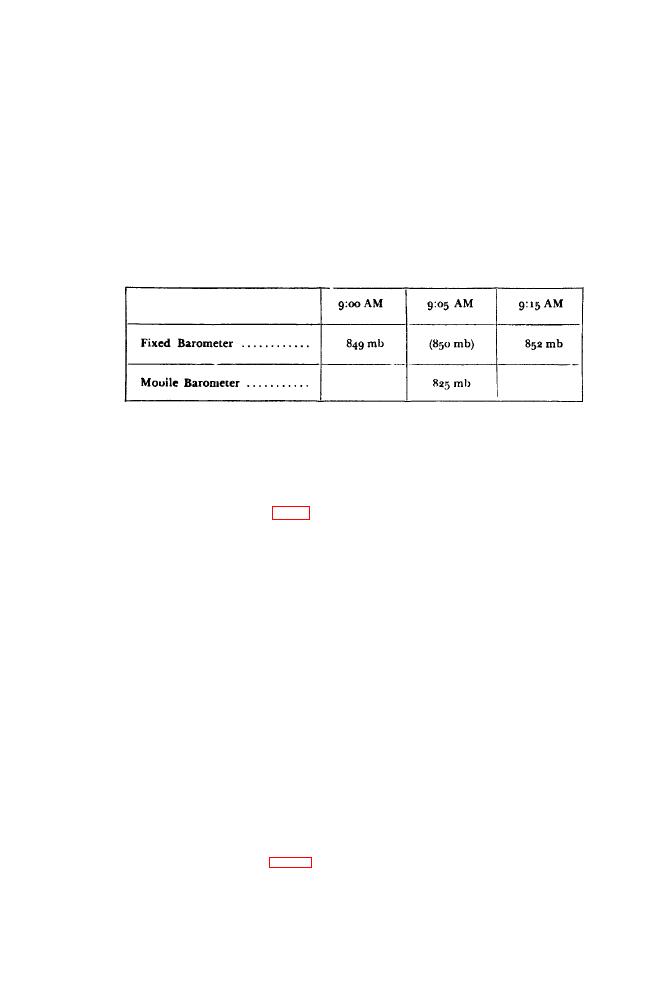
barometer case, or Smithsonian Meteorological Tables 51 and 52, Fifth
Revised Edition. The procedure given in b and c below illustrates
the use of two barometers. The procedure given in paragraph 1 3 d
illustrates the method when one barometer is employed. Either method
may be used with satisfactory results.
b. Procedure. (1) Leave one barometer at a given location. Read
the barometer and the thermometer at regular intervals and record
the time, pressure, and temperature.
(2) Take the second barometer to the other location. Read it and
record the time of the readings, pressure and temperature.
(3) Determine the average temperature between the two locations.
(4) If readings were not taken at both stations at the same time,
interpolate to find the pressure value at each station at the same time
as follows:
(The interpolated pressure value, 850 millibars (mb), is shown in
parenthesis. Assume that the mean air temperature between the two
locations is 50 F.)
(5) With simultaneous pressure readings of 825 and 850 millibars
at two different points and a mean temperature of 50 F., it is possible
to obtain the difference in elevation by the use of the nomograph.
102 -E is marked on graph paper. Pressure values, in millibars, are
represented by slanting vertical lines. Mean air temperature is repre-
sented by diagonal lines running from the lower right-hand corner
to the to left side of the graph. To read the sample solution marked
by dotted lines on the graph, proceed as follows:
(1) Locate the lower pressure value (825 mb) on the bottom scale.
(2) Move vertically upward until you intersect the slanting verti-
cal line which corresponds to the higher pressure (850 m b ) .
Note. The use of a straightedge will help in using the nomograph.
(3) At the point of intersection, move horizontally until you inter-
sect the diagonal line which corresponds to the mean air temperature
(50 F.) .
(4) At the point of intersection, move vertically upward to the top
scale, and on this read the approximate difference in elevation between
the two points. This is about 813 feet.
(5) Thus there is a difference of 813 feet between the two elevations.
This corresponds to a difference of 25 millibars in pressure at 50 F.,
mean air temperature, under these particular pressure conditions.
Note. 1. If the barometer is transported by air, or if there is a rapid change of pres-
sure of 100 millibars or more, wait at least 24 hours before taking a reading in order



 Previous Page
Previous Page
